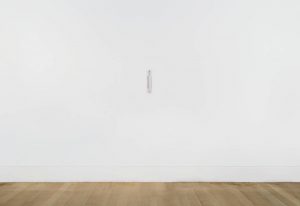The Institutional Theory Of Art
The Institutional Theory Of Art is the theory that an object can be or become art in the context of the institution known as “the art world” – i.e. a gallery. For example Ceal Floyer’s ‘Monochrome Till Receipt (White)’ (1999) is simply a till print-out of a list of items purchased by Floyer at Morrison’s. However, despite the title the receipt is in fact has a yellowish- white tone and the information is printed in blue ink. Nevertheless, all the items are white or have the word ‘white’ in their name, for example; flour, hand cream, toothpaste, white chocolate, tissues and many more, in fact there are forty nine purchases in total. By the receipt being framed and in a gallery it creates a conceptual transformation, it immediately gives the art a deeper meaning. It makes people look at the object longer- for example, in this case, in order to realise all the items are white you would have to look at it longer, and defiantly longer than you would normally look at a receipt you found (unless it was your own).
The setting of a gallery (“art world”) can make people think about a completely mundane, everyday object in a much deeper, conceptual way and makes them view it as art due to the change in context and setting. This, therefore, is a prime example of an object becoming art by changing its environment and institutionalising it into the art world.


